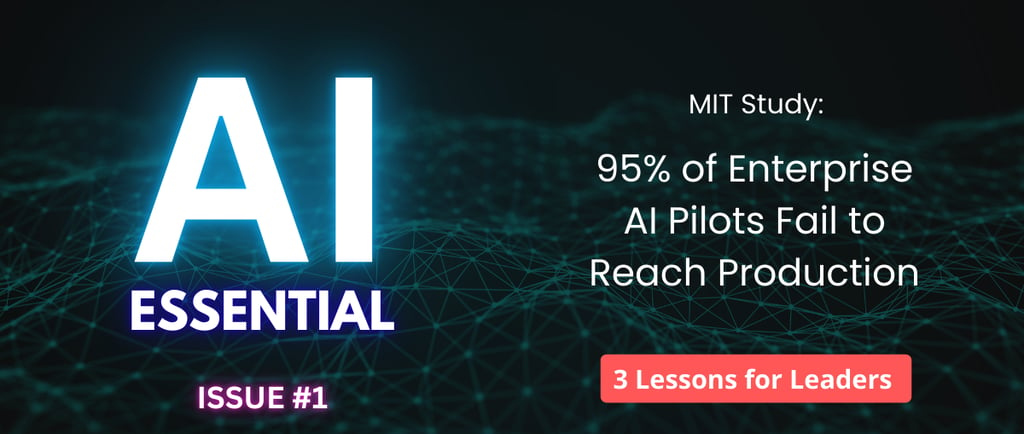95% of Enterprise AI Pilots Fail to Reach Production — 3 Lessons for Leaders
In this week of AI Essential, we explore a new MIT-backed study showing 95% of enterprise AI pilots never reach production. This issue breaks down the 3 key takeaways leaders need to understand in order to cross the AI divide — and position their businesses on the winning side of AI adoption.
AI ESSENTIAL
Eric Wabrick
8/25/20251 min read


AI Story of the Week
MIT’s new State of AI in Business 2025 report reveals a hard truth: 95% of enterprise AI pilots fail to reach production. Despite $30–40B in annual enterprise GenAI investment, most organizations are still stuck in pilot mode with no measurable ROI.
Key Insights
1. AI’s Biggest Barrier Isn’t Models — It’s Learning
Most enterprise pilots fail because tools don’t adapt. They forget context, don’t improve with feedback, and feel brittle compared to consumer tools like ChatGPT. This “learning gap” drives user resistance: employees love AI personally, but reject enterprise deployments that don’t evolve with their workflows.
2. Narrow, Workflow-Specific AI Delivers Real Value
Broad LLMs may wow in demos, but they rarely survive inside enterprise processes. Success comes from specialized AI built for verticals and workflows — like contract review, call summarization, or tax compliance. These tools reduce hallucinations, integrate deeply, and hit P&L outcomes. In contrast, over half of budgets go to sales and marketing pilots, which are visible but often deliver less ROI than back-office automation.
3. Human + AI Is the Winning Formula
Generative AI isn’t replacing workforces wholesale. Instead, it’s augmenting roles: sales reps automate follow-ups, developers speed up code with AI assistance, and support teams offload repetitive tickets. The study shows real ROI emerging through augmentation and reduced outsourcing (like eliminating BPO contracts), not mass layoffs.
Why It Matters
We’re at an inflection point. The AI hype cycle is waning, and organizations are demanding systems that actually work in production. Winners will be those who:
Stop buying static tools that require constant prompting
Invest in adaptive, workflow-specific AI
Pair human expertise with AI augmentation
The lesson from MIT is clear: the gap between hype and reality is a learning gap. The organizations that close this learning gap will be the ones that cross the AI divide — and capture the real business value of AI.
Connect
Explore our social media pages
Contact
Newsletter
724-801-1234
© 2025. All rights reserved.
